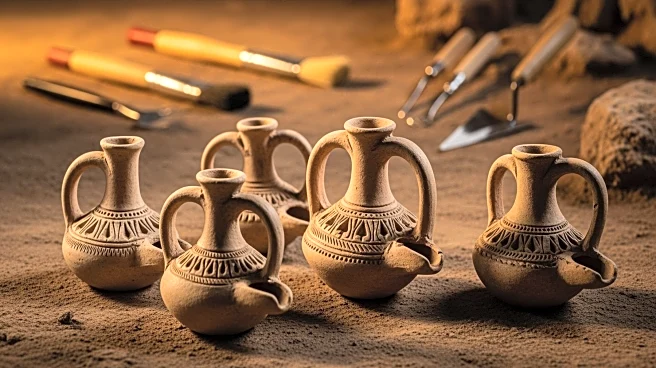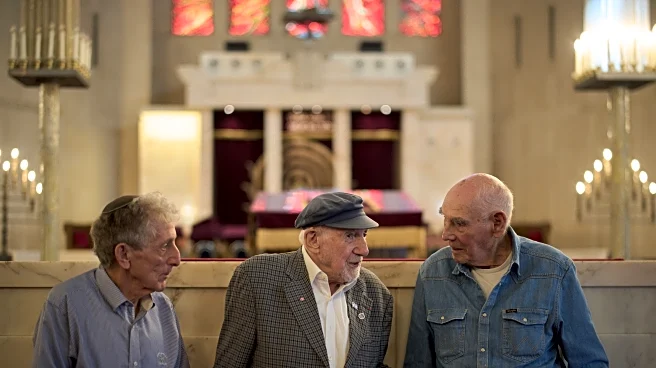What's Happening?
Archaeologists have solved a long-standing mystery regarding the use of clay cornets found in Chalcolithic sites in Israel and Jordan, dating back 6,000 years. These ceramic objects, resembling ice cream
cones, were initially thought to be used for various purposes, including dairying or as V-shaped bowls. However, recent analysis by Sharon Zuhovitzky, Paula Waiman-Barak, and Yuval Gadot suggests that these cornets were used as vigil lamps. The study, published in the Journal of the Institute of Archaeology of Tel Aviv University, involved examining 35 complete cornets and 550 broken-off bases from Teleilat Ghassul, a Chalcolithic site in Jordan. The researchers found traces of beeswax inside the cornets, indicating their use as candles with linen wicks. These findings suggest that the cornets were personal ceremonial objects used in processions of fire, a practice unique to the Chalcolithic period in this region.
Why It's Important?
The discovery of the cornets' purpose as ceremonial lamps provides significant insights into the cultural and ritual practices of ancient Chalcolithic societies in Israel and Jordan. Understanding these practices helps archaeologists and historians piece together the social and religious dynamics of early civilizations. The use of beeswax candles in ceremonial processions highlights the importance of ritualistic fire in these communities, offering a glimpse into their spiritual life. This finding also challenges previous assumptions about the sophistication of Chalcolithic craftsmanship, suggesting that these objects were made by individuals rather than specialized craftsmen, reflecting personal and communal traditions. The study contributes to a broader understanding of ancient ceremonial practices and their evolution over time.
What's Next?
Further research may explore the broader implications of these findings, such as the potential connections between Chalcolithic ceremonial practices and later cultural developments in the region. Archaeologists might investigate other sites to determine if similar objects were used in different contexts or periods. Additionally, the study opens up possibilities for examining the role of beeswax and other materials in ancient rituals, potentially leading to new discoveries about trade and resource utilization in early societies. The findings may also prompt a reevaluation of other archaeological artifacts previously thought to have mundane uses, encouraging a deeper exploration of their ceremonial significance.
Beyond the Headlines
The revelation that cornets were used as ceremonial lamps rather than practical objects underscores the complexity of ancient societies and their symbolic practices. This discovery highlights the importance of interdisciplinary approaches in archaeology, combining material analysis with cultural interpretation. It also raises questions about the transmission of ritualistic knowledge and the role of individual creativity in ancient communities. The study suggests that personal involvement in ritual creation was significant, reflecting a communal yet individualized approach to spirituality. This insight may influence how archaeologists interpret other artifacts and their cultural contexts, emphasizing the need to consider both practical and symbolic uses.













